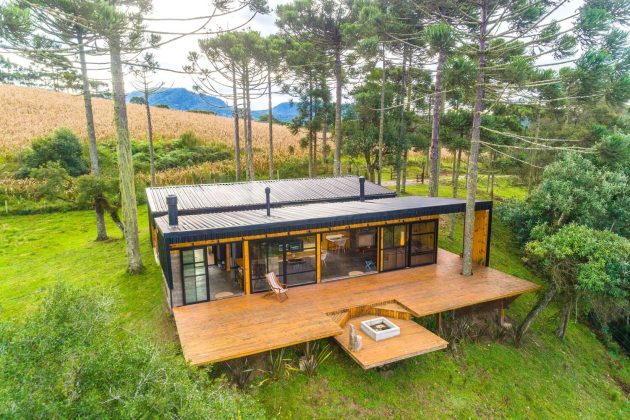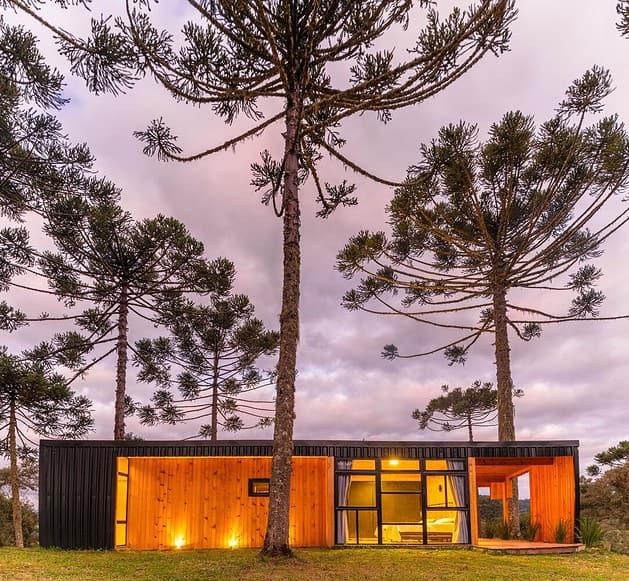Project: Araucárias House
Architects: Alexandra Lima Demenighi + Rodrigo Vargas Souza
Location: Rio Rufino, Brazil
Area: 1.614 sf
Year: 2023
Photographs by: Mauro Goulart
Araucárias House by Alexandra Lima Demenighi + Rodrigo Vargas Souza
This project is a mountain residence located in a cold climate area. It consists of two volumes with sloping roofs connected by a central glass void. The design emphasizes a connection to nature with extensive use of wood and large glass openings. The eastern facade opens onto a wooden deck with valley views, while the western facade offers cross-ventilation and passive solar heating. The suite features a bathtub with a forest view. The house includes heat-generating elements like a fireplace and wood stove, constructed from reinforced concrete. The construction method used is a lightweight structural system with wooden panels for wall assembly.

An architecture for the cold of the mountains, for the temperate climate of the south, and an aesthetic of cold as a starting point. For the writer Italo Calvino, lightness, speed, exactitude, visibility, multiplicity, and consistency are the six propositions of virtues that literature can save. These propositions were also the guidelines that guided the conception of this project.
An aerodynamic architecture placed with exactitude on top of a small hill in an Araucaria forest in Serra Catarinense. The residence is formed by two volumes with sloping roofs towards the center and joined by a central glassed and transparent void. The volumes divide the social and intimate spaces and at their ends the glassed frames frame and highlight the landscape in an invitation to contemplation! Wood is the protagonist of the project, together with black metal roofing, exposed concrete, and glass. The external closure is made of metal roofing with thermal insulation to isolate it from the cold, while the internal cladding is all wood. The floor is made of burnt cement in the social volume and wooden planks in the intimate volume.
The east facade is all glassed and opens onto a large wooden platform (deck) with a ground fire, where it is possible to view a large valley. On the west facade, there are large openings that allow not only cross ventilation between the volumes but also the use of passive solar heating in the intimate volume. In the suite, there is a bathtub that has a view of the denser forest of the terrain. The heat-generating elements: fireplace, grill, and wood stove, are made of reinforced concrete. Inside the stove, there is a coil that heats the suite’s water. The adopted construction system was the lightweight structural system of planted forest wood (Light Wood Frame). The panel method was used for wall assembly, which brought more speed and caused less impact on the terrain.
-Alexandra Lima Demenighi





























